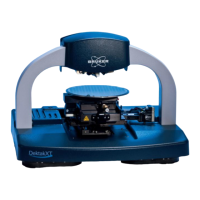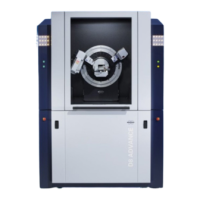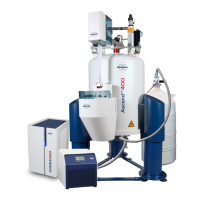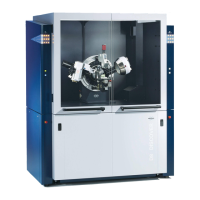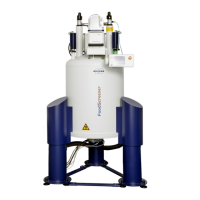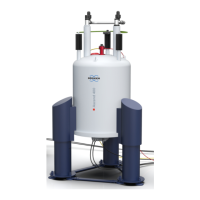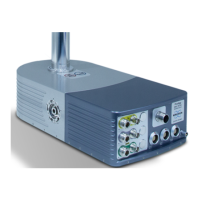Installation
H148850_3_003 31
• If a message is displayed showing which COM port number was selected (look for a
“bubble” in the lower-right corner of the screen), make a note of it.
• Confirm that the COM port selected for the USB matches the port selected in the host
computer's instrument control software.
6.8 Establishing an RS-232 Serial Communications Interface
Use the provided serial cable to connect the host computer to the sample changer.
• Plug one end of the cable into the host computer’s serial (COM) port selected for sample
changer communications.
• Finger-tighten both screws of the connector.
• Connect the other end of the cable to the sample changer’s COM1 port.
• Finger tighten both screws of the connector.
Notes
If a host computer serial port with a DB9F, a DB25M, or a DB25F connector (9 pin D-
subminiature receptacle or 25 pin D- subminiature plug or receptacle) must be used, use the
mating connector from the universal port adapter kit. You can order the adapter kit from
Bruker or purchase an adapter locally to convert the serial port to a DB9M. Do not use a
“null modem” adapter.
Ensure you are connecting the adapter to the COM1 port. Connecting the adapter to the
COM2 port on the sample changer will cause a malfunction. The sample changer COM2 port
is used for communication with the temperature units.
When interconnecting any computing devices, keep the communications cables away from
sources of electromagnetic or radio frequency (RF) interference, such as electric motors,
transformers, fluorescent light ballasts, or RF energy sources. Limit cable runs for RS-232C
to less than 16 meters. If these conditions cannot be satisfied, use low‑impedance, fully
shielded cables to provide satisfactory operation. The cables are available from many
sources, but you will need to specify the correct mating connectors and “straight-
through” (DTE-DCE) wiring.
6.9 Verifying Installation
Once installation of the sample changer is complete, it is important to verify that you have
installed it correctly. Attempting to use it before ensuring that it is installed correctly may
result in damage to the sample changer.
The gripper must align with each sample vial to ensure satisfactory analysis. Shipping or
rough handling can disturb the sample changer’s cabinet-to-base alignment. If the sample
changer is incorrectly aligned, the gripper will not function properly. Therefore, a system
alignment should be performed before attempting to run sample sequences with the sample
changer.
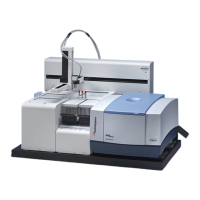
